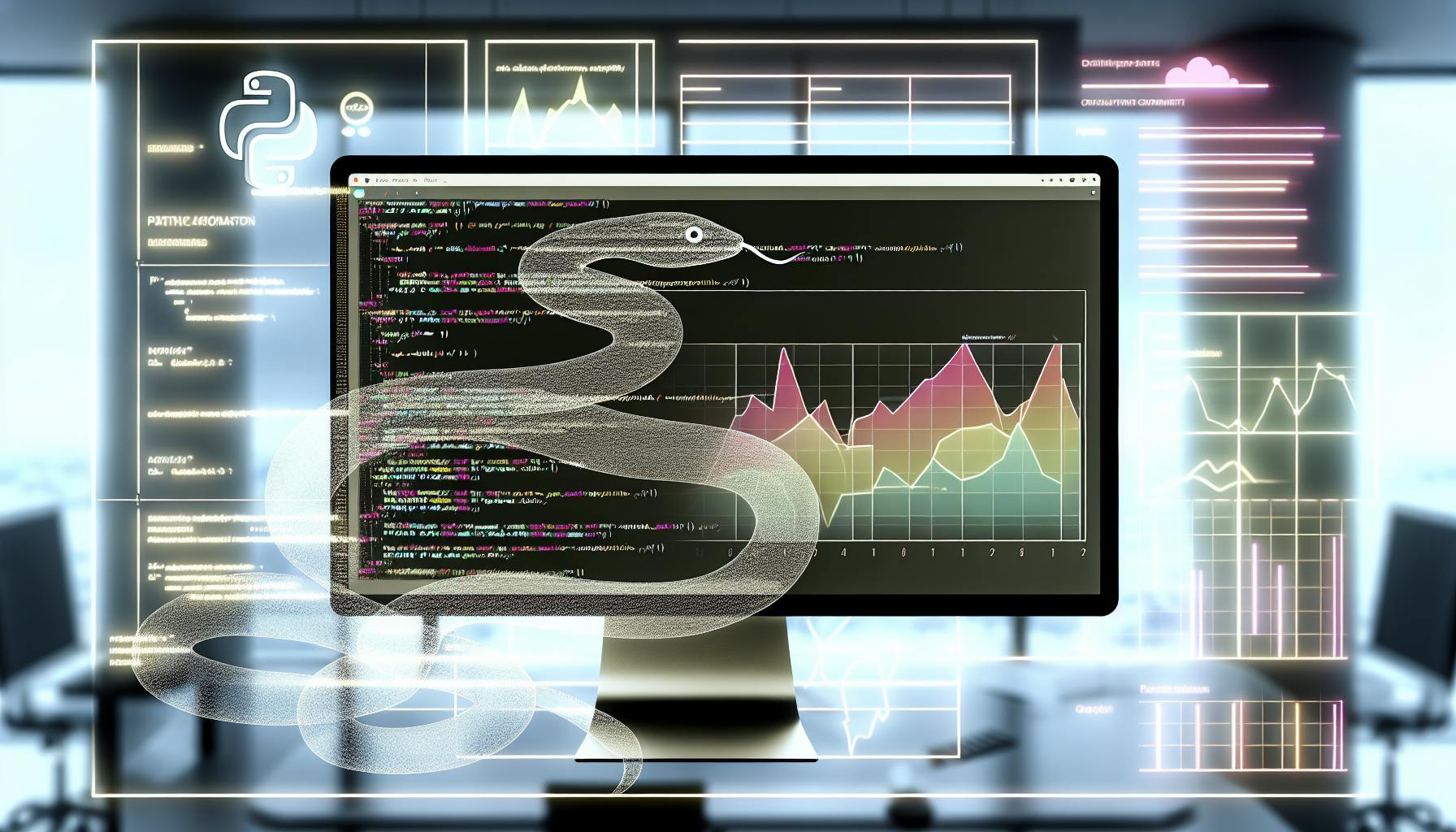Most data analysts would agree that analyzing temporal data brings unique challenges.
Luckily, time series analysis and econometrics provide powerful, complementary toolsets for modeling trends, relationships, and dynamics in time-dependent data.
In this post, we'll clarify the distinct purposes of these approaches, walk through key techniques like decomposition and vector autoregression models, and showcase real-world examples where these methods enable more accurate forecasts and richer insights from temporal datasets.
Unveiling the Dynamics of Time Series Analysis and Econometrics
Time series analysis and econometrics are two powerful statistical techniques for understanding and predicting trends in temporal data. Though related, they have some key differences in focus and methodology.
Essence of Time Series Analysis in Temporal Data
Time series analysis examines patterns in data over time to uncover insights like seasonality, cycles, and long-term trends. Key aspects include:
- Using time-ordered data and statistical models like ARIMA to forecast future points in a time series based on historical patterns
- Testing for stationarity to ensure a time series has a stable statistical properties over time
- Decomposing time series into trend, seasonal, and residual components to study different effects
- Utilizing methods like autocorrelation and cross-correlation to quantify relationships between past and current values
Time series analysis provides crucial diagnostics and forecasts to guide planning around temporal phenomena.
The Role of Econometrics in Economic Data Forecasting
Econometrics also looks at data patterns over time, but specializes in revealing economic relationships using regression models and hypothesis testing. Key facets include:
- Quantifying how economic variables like GDP, inflation, and employment influence each other
- Testing economic theories by estimating regression models and analyzing the relationships between multiple time series
- Employing techniques like cointegration and vector autoregression to model equilibrium and causal links between non-stationary series
- Accounting for endogeneity, heteroskedasticity, and autocorrelation when specifying econometric models
Econometric analysis produces vital insights for economic forecasting, policy evaluation, and financial analysis.
By formally assessing associations between temporal data series, time series analysis and econometrics offer invaluable visibility into unfolding trends. Their nuanced toolkits cater to specialized needs in deciphering dynamic systems.
Dissecting Time Series and Econometric Approaches to Temporal Data
We delve into the core methodologies of time series analysis and econometrics, highlighting their distinct and overlapping techniques in analyzing and forecasting business data over time.
Time Series Decomposition: Trend, Seasonality, and Residuals
Time series decomposition breaks down a time series into its core components - trend, seasonality, and residuals - to understand the different patterns driving the data.
The trend shows the general direction of the time series, increasing, decreasing or stationary over time. Business analysts can use time series decomposition to quantify growth trends for metrics like revenue and sales.
Seasonality extraction identifies repeating short-term cycles, like monthly, quarterly or annual fluctuations. For ecommerce businesses, decomposition would highlight seasonal spikes around the winter holidays.
The residual component captures the idiosyncratic variations after accounting for trend and seasonal factors. Analysts can model the residual term to forecast irregular business disruptions.
Overall, time series decomposition provides granular insights to explain why temporal data behaves in certain patterns.
The Intricacies of Econometric Time Series Regression
Econometric models often employ time series regression, relating multiple economic variables over time to assess their dynamic interdependencies.
For example, an econometric model may use time series data to relate consumer spending growth (dependent variable) to factors like household income, inflation, stock market returns (independent variables) over time.
These models also incorporate lagged variables to capture delayed effects, like relating consumer spending to income changes from previous quarters.
Econometricians use statistical tests like Granger causality to study precedence and information flow between variables. For businesses, these models provide insights into leading economic drivers of revenue and operational metrics.
Advanced econometric frameworks like vector autoregression (VAR) and cointegration modeling further analyze multidirectional variable relationships over time.
Forecasting Business Trends with Econometric and Time Series Models
Both time series analysis and econometrics can be used to predict future trends and scenarios for business planning.
Time series forecasting techniques like ARIMA models directly extrapolate historical patterns into the future. They provide accurate short-term forecasts responding to recent trend and seasonal factors.
Econometric models simulate future estimates based on projected values for explanatory indicators like income growth, commodity prices. This works well for long-term forecasts when economic relationships remain stable.
Hybrid approaches combining both methodologies provide the most robust forecasts. For example, econometric projections of consumer demand can be input into ARIMA models to predict sales with seasonal adjustments.
Overall, an integrated time series and econometric modeling framework delivers reliable, granular business forecasts attuned to both historical and emerging trends.
sbb-itb-ceaa4ed
Diving into Statistical Methods for Time-Dependent Data
Time series analysis and econometrics both rely on advanced statistical techniques to model temporal data and uncover insights. By understanding some of the fundamental methods common to both approaches, we can better leverage them for forecasting, trend analysis, and hypothesis testing.
ARIMA and Vector Autoregression: A Dual Perspective
Autoregressive Integrated Moving Average (ARIMA) models are a cornerstone of univariate time series analysis. They model the autocorrelation structure in the data to make forecasts. Vector Autoregression (VAR) does the same for multivariate time series by capturing interdependencies among multiple variables. Both can provide greater accuracy than naive forecasts. While ARIMA treats all variables beyond the target as external regressors, VAR avoids any distinction between endogenous and exogenous variables by including only lagged values of all variables as predictors.
So ARIMA is best for producing forecasts of individual time series, while VAR is preferable for analyzing dynamic relationships among variables and conducting policy simulation experiments. But they both quantify the persistence over time and help distinguish between permanent and transitory shocks.
Testing Relationships: Cointegration and Granger Causality
Two key concepts for investigating relationships among non-stationary time series are cointegration and Granger causality. Cointegrated series share a common stochastic drift so that certain linear combinations of them become stationary. This suggests an underlying equilibrium relationship among the variables. Granger causality tests if past values of one series have predictive content for another above and beyond its own lags. So it examines predictive causality rather than true causation.
While cointegration defines long-run equilibrium associations, Granger causality looks at short-run dynamics of influence. Together they provide a nuanced understanding of the linkages between variables over different time horizons. For example, energy consumption and GDP may be cointegrated in the long run while electricity prices may Granger cause natural gas demand changes in the short term.
The Imperative of Stationarity: Unit Root Tests and Their Implications
Most statistical modeling procedures presume stationarity. So checking time series for unit roots via the Augmented Dickey-Fuller or Phillips-Perron tests is an important first step. Failing to reject the null hypothesis of a unit root indicates non-stationarity. Such series often need to be differenced before modeling to avoid spurious regressions.
However, over-differencing loses information on long-run relationships. So additional techniques like cointegration analysis help to reconcile non-stationarity with stationary modeling. Understanding and addressing non-stationarity also aids in structural break detection and recognizing difference-stationary vs trend-stationary data generating processes. This further enables sound statistical analysis and reliable model specification.
Practical Insights: Econometric and Time Series Analysis in Action
Predicting Sales with Time Series Forecasting Techniques
Time series forecasting techniques like ARIMA can be highly effective for predicting future sales. By assessing historical sales data to identify trends, seasonality, and other patterns, ARIMA models can make statistically robust projections.
For example, an e-commerce business can feed their daily sales data from the past 2 years into an ARIMA model. The model analyzes this time series data to detect seasonal spikes around holidays and quantify long-term growth trends. It then makes a forecast for the next 6 months of expected sales. The business can use this sales prediction to optimize inventory levels.
Quantifying Marketing Influence with Econometric Models
Econometric modeling enables quantifying the business impact of marketing efforts. By incorporating lagged response variables and error correction models, marketers can estimate campaign effectiveness.
For instance, an automotive company runs a regional TV ad campaign. An econometric analysis indicates that the ads increased local dealership visits over the next 2 weeks, controlling for seasonality and previous trends. The model estimates a 12% sales bump from the campaign by assessing lagged response variables week-over-week post-campaign.
The Cutting Edge of Nowcasting: Synthesizing High-Frequency Indicators
Nowcasting combines high-frequency indicator data across sources to estimate the current state of the economy. For example, factors like credit card transactions, mobility data, and job postings can inform economic nowcasting models.
A financial firm nowcasts GDP growth by ingesting hundreds of alternative data signals, from satellite imagery of store parking lots to cargo container shipping volumes. This high-frequency data synthesization generates a comprehensive real-time view of economic trajectory. The firm leverages nowcasting insights to adjust investment strategies.
Conclusion: Synthesizing the Insights from Time Series and Econometric Analysis
Time series analysis and econometrics offer complementary statistical approaches for interpreting temporal data and generating forecasts. While time series analysis focuses specifically on the properties of the data over time, econometrics incorporates additional explanatory variables to model economic relationships.
Key differences include:
-
Time series analysis relies more heavily on past values and trends in the data to predict future values. Econometrics brings in external factors that may impact the variable of interest.
-
Time series models like ARIMA aim to capture seasonality, cycles, and autocorrelation structures in the data. Econometric models specify economic relationships and test hypotheses about cause-and-effect.
-
Time series analysis tests stationarity and seeks to make non-stationary data stationary. Econometrics is more concerned with specifying the correct functional form.
-
Time series forecasting may be more accurate for short-term predictions, while econometric models better capture long-run equilibrium relationships.
Ultimately, the techniques have complementary strengths in analyzing temporal data. Time series excels at flexible, accurate short-term forecasting while econometrics focuses on modeling economic relationships for hypothesis testing and long-term prediction. Using insights from both can lead to deeper understanding of temporal phenomena.


